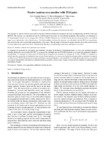
Please use this identifier to cite or link to this item:
http://ricaxcan.uaz.edu.mx/jspui/handle/20.500.11845/727Full metadata record
| DC Field | Value | Language |
|---|---|---|
| dc.contributor | 6207 | es_ES |
| dc.contributor.other | https://orcid.org/0000-0002-7081-9084 | es_ES |
| dc.coverage.spatial | Global | es_ES |
| dc.creator | Guzmán García, Karen Arlete | - |
| dc.creator | Borja Hernández, Candy Gretel | - |
| dc.creator | Valero Luna, Claudia | - |
| dc.creator | Hernández Dávila, Víctor Martín | - |
| dc.creator | Vega Carrillo, Héctor René | - |
| dc.date.accessioned | 2019-03-13T18:09:17Z | - |
| dc.date.available | 2019-03-13T18:09:17Z | - |
| dc.date.issued | 2012-06 | - |
| dc.identifier | info:eu-repo/semantics/publishedVersion | es_ES |
| dc.identifier.issn | 0035-001X | es_ES |
| dc.identifier.uri | http://localhost/xmlui/handle/20.500.11845/727 | - |
| dc.identifier.uri | https://doi.org/10.48779/bcrn-ez91 | es_ES |
| dc.description | The response of a passive neutron area monitor with pairs of thermoluminescent dosimeters has been calculated using the Monte Carlo code MCNP5. The response was calculated for one TLD 600 located at the center of a polyethylene moderator. The response was calculated for 47 monoenergetic neutron sources ranging from 1E(-9) to 20 MeV. Response was calculated using two irradiation geometries, one with an upper source and another with a lateral source. For both irradiation schemes the response was calculated with the TLD in two positions, one parallel to the source and another perpendicular to the source. The advantage of this passive neutron monitor area is that can be used in locations with intense, pulsed and mixed radiation fields like those in radiotherapy vault rooms with linear accelerators. | es_ES |
| dc.description.abstract | La respuesta de un monitor de área pasivo para neutrones con pares de dosímetros termoluminiscentes TLDs ha sido calculada mediante métodos Montecarlo con el código MCNP5. La respuesta fue calculada para un TLD 600 localizado en el centro del moderador cilíndrico de polietileno. La respuesta se calculó para 47 fuentes mono energéticas de neutrones con energías de 1E (-9) a 20 MeV. La respuesta se calculó para dos geometrías de irradiación, una con una fuente superior y la otra con una fuente lateral, para ambas geometrías la respuesta se obtuvo con el TLD en dos posiciones respecto a la fuente, una perpendicular y la otra paralela. La ventaja del monitor pasivo es que puede ser usado en instalaciones con campos de radiación intensos, pulsados y mixtos como los que se producen en los bunkers de radioterapia con aceleradores lineales. | es_ES |
| dc.language.iso | eng | es_ES |
| dc.publisher | Sociedad Mexicana de Física, A.C. | es_ES |
| dc.relation | http://revistas.unam.mx/index.php/rmf/article/viewFile/31853/29420 | es_ES |
| dc.relation.uri | generalPublic | es_ES |
| dc.rights | Atribución-NoComercial-CompartirIgual 3.0 Estados Unidos de América | * |
| dc.rights.uri | http://creativecommons.org/licenses/by-nc-sa/3.0/us/ | * |
| dc.source | Revista Mexicana de Física, Vol. 58, 2012, pp. 220–223 | es_ES |
| dc.subject.classification | CIENCIAS FISICO MATEMATICAS Y CIENCIAS DE LA TIERRA [1] | es_ES |
| dc.subject.other | Neutrón | es_ES |
| dc.subject.other | dosis equivalente ambiental | es_ES |
| dc.subject.other | monitor de área | es_ES |
| dc.title | Passive neutron area monitor with TLD pairs | es_ES |
| dc.type | info:eu-repo/semantics/article | es_ES |
| Appears in Collections: | *Documentos Académicos*-- UA Ciencias Nucleares | |
Files in This Item:
| File | Description | Size | Format | |
|---|---|---|---|---|
| Passive neutron TLD pairs.pdf | 454,27 kB | Adobe PDF |  View/Open |
This item is licensed under a Creative Commons License
